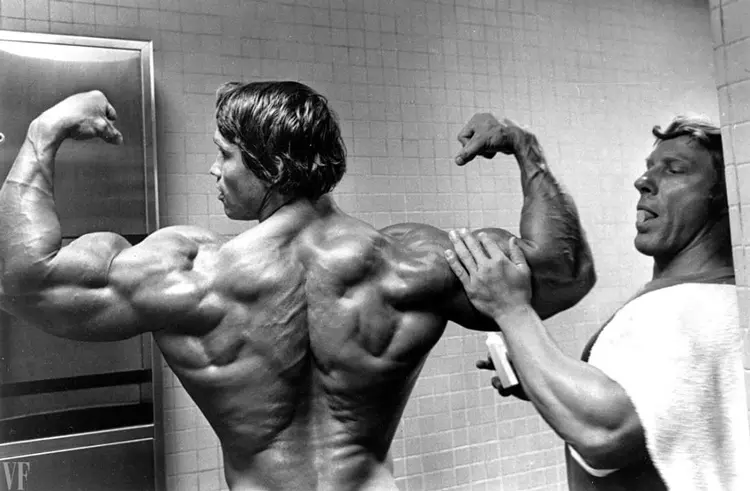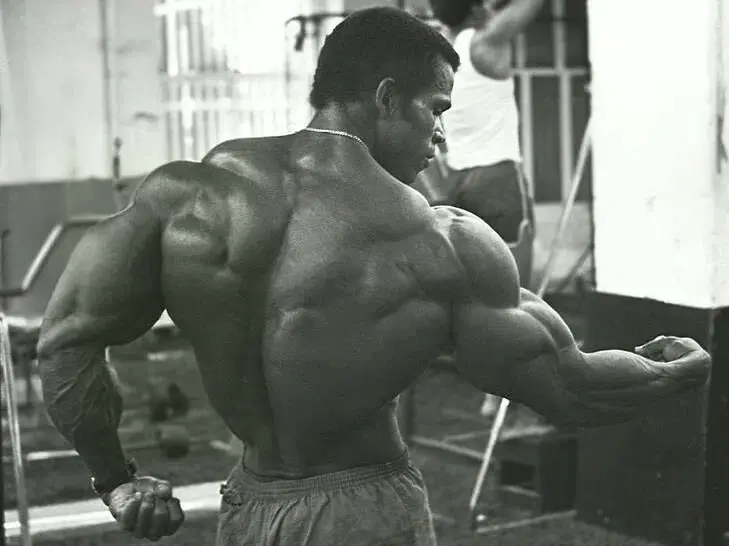A bigger, more muscular back is something of an anomaly. We throw the requisite exercises at it almost in a haphazard way and expect it to respond and grow thicker and wider while we meticulously formulate tactful plans for the other more showy muscles. When you’re at the beach or poolside few if any onlookers will be impressed with your back. Instead chest and arms get all the accolades.
Interestingly enough, we tend to spend precious hours and expend unlimited amounts of intensity toward our chest and arms. These look-at-me mirror muscles get more attention from onlookers in the gym. Our backs are left in the backseat as our redheaded stepchild.
Your back is one of the tried and true standards of overall body strength. “Put your back into it” is an age-old right of passage when thinking of farmer’s strength, that whole-body brute strength we secretly long for.
Back it Up
Our backs need their due attention. Traditional back programs are normally replete with tons of pull-downs, rows, and deadlifts. Those are all great, but two things are at play here and need addressing. One, we need a better structure to our back workouts; one that makes more sense and is more targeted. Two, we need to equal or surpass the volume of our back workouts compared to our chest workouts. This will create more strength, balance, and, subsequently, more muscle mass.
But what if time isn’t on your side? What if you set out to finally put the ego aside, take the time to structure a sound and effective back workout but struggle to find the time to actually put it into action?
Level Up Your Fitness: Join our 💪 strong community in Fitness Volt Newsletter. Get daily inspiration, expert-backed workouts, nutrition tips, the latest in strength sports, and the support you need to reach your goals. Subscribe for free!
Let’s address all of these challenges one at a time and then formulate several back programs that can easily be plugged into any time-crunched day in the gym.
Back to Basics
Speaking in layman’s terms, the back can be divided into two main groups of exercises. One being pull-downs/pullups, and the other being rows. Yes, deadlifts have their place as well, but here we are simply looking at what these exercises can do to build more muscle, not just strength.
A back workout isn’t complete without covering all its bases. As a relatively complex muscle group, the back is able to be stimulated from many different angles as well as challenged with difficult moves such as pull ups and chin ups. It’s most-likely true that you hit your chest from every angle you can think of so why neglect your back?
The programs below will provide you with a complete back workout to get you caught up and build balance in your physique.
Volume
Many lifters simply don’t apply enough volume to their back training. Chest and arms get their fair share and then some, but our backs are capable of so much more. With so many integral parts, angles, and strengths, our backs should be able to handle plenty of stress and volume.
When it comes to training in a time crunch things can get a bit tricky. This is where succinct and detailed decisions come into play. By choosing the right exercises, the best techniques, and performing them in a way that optimizes your results will prove to be your best advantage when drawing up your plans.
Strength vs. Size
Another issue to consider is the size versus strength training goal. Contrary to many, training for size and strength are two distinct processes. Yes, you will get somewhat stronger if you train exclusively for size and you will get bigger from strength-focused training, but if time is an issue then hypertrophy style training will be better suited.
Why? Pure strength training requires longer rest periods, heavier loads, and more straight set style workouts. All things that aren’t conducive to shorter workouts. Size training, on the other hand, focuses more on fatigue, muscle fiber recruitment, and shorter rest periods. Techniques such as supersets, pre-exhaustion, and compound sets drive the hypertrophy response much more effectively than the long, slow cadence of a strength workout.
How to Build a Bigger Back
So how do we build a bigger back with little time? Let’s address each of the following issues and then we’ll throw it all together for a few effective and efficient back-building programs.
Cover The Angles
If not for anything else, we’ll need to focus on two main things when it comes to exercise selection to cover all our bases. Angle of pull and hand grips. For angles choose from one or two pull up/chin up (vertical pull) variations and one or two rowing (horizontal pull) variations. Additionally, we’ll want to vary our grips from close to medium to wide. Furthermore, we could also look at overhand, underhand, and neutral grips for each as well.
Level Up Your Fitness: Join our 💪 strong community in Fitness Volt Newsletter. Get daily inspiration, expert-backed workouts, nutrition tips, the latest in strength sports, and the support you need to reach your goals. Subscribe for free!
For example, if you go wide with a pull up, you may next go with a medium-grip bent-over barbell row, and then a close-grip pull-down or pulley row. Another could be a close-grip pull-down, Wide-grip pulley row, and then a neutral-grip pull up.
Pump up The Volume
Don’t be afraid to jack up your volume. Rest times (which we’ll go over shortly) will be cut down more than you’re probably used to so you’ll have more room for more volume. The back is a thick, strong group of muscles that can not only handle serious loads but also numerous sets without too much fatigue. You’ve given your chest and arms plenty over the years. It’s time to give your back its fair share.
Combine Your Training
Next, we’ll use the tactics above and combine certain movements together. This can involve the aforementioned supersets, pre-exhaustion, and compound sets. The goal is to condense training time down to fit your allotted time frame but also be as effective as possible for optimal gains in muscle size.
We may combine a straight arm lat pull-down with a chin up or dumbbell cross bench pullovers with a barbell row. We could also go back and forth from wide-grip pull-downs to T-bar rows. The key is to build on the rules we’ve already established (angles and volume) and create a more comprehensive plan.
Set a Time
As stated earlier, time is a serious factor. Not only will we want to cut down on time spent between sets, which is optimal for hypertrophy, we’ll also want to utilize little to no rest between supersets and compound sets. This is where a timer or watch will come in handy.
Limiting rest between each straight set to around 45 to 60 seconds will be important if we want to complete the workouts on time. There’ll be no time for idle chit chat or selfies. Be like a hawk and keep a keen eye on your time.
Focus Like a Sniper

With time as a major issue, focus becomes possibly the single, most important attribute you will put into practice. I know many lifters like to carry their phone around like an appendage and check it feverishly throughout their workout, but nothing will break your focus and concentration and pry your head out of your training like your phone. It’s a hard pill to swallow, but you will not have any time to check social media, text messages, or scroll to that “perfect song.”
If you really want to make progress with the little time you do have , put the phone away and start getting used to putting your head into your training 100%.
Sample Programs
Now it’s time to take all that we’ve learned and put it into a few plans. Below are a few “plug and play” routines to rotate in your current time-crunched week. Since they are quick-hitting workouts feel free to use them twice per week for a bit more frequency if you’re able.
Each can be completed in around 15 minutes or less as long as you stay focused, pay close attention to rest periods, and execute each movement to its fullest.
Routine 1
- Superset: Straight-arm lat pull-down and close-grip pull-down 3 x 10-12
- Superset: Wide-grip bent-over barbell row and medium-grip bent-over barbell row 3 x 8-10
- Wide-grip pull-down, medium-grip pull-down, close-grip pull-down 1 x 12 each set, no rest between sets
Routine 2
- Superset: Cross-bench dumbbell pullover with neutral-grip pull up 3 x 12 (AMRAP on pull ups)
- Superset: T-bar row and single-arm dumbbell row 3 x 10
- Cable row 3 x 12 20-30 seconds of rest between sets
AMRAP = As Many Reps as Possible. Just rep out to failure.
Routine 3
- Wide-grip pull up: as many sets as it takes to total 50 reps, 15 second rest between sets
- Drop set: T-bar row 10-12 reps for 5 drop sets
- Superset: Straight-arm lat pull-down and Pulley row 2 x 10-12
In Closing
It doesn’t take an hour or more to train your back. As long as you’re covering the angles, include adequate volume, strategically combine specific exercises, pay close attention to rest times, and focus like crazy you’ll be able to build an impressive back in less time than you think.












Hi Brad, would really like to see some examples of splits to go along with these back workouts. Been trying to find ways to condense my workouts without sacrificing gains. Thanks!